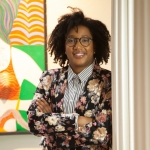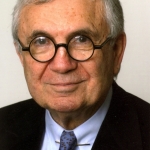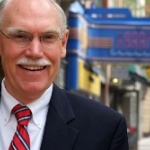Here you will find useful tips and tricks on how to leverage these economic impact findings and make the case for arts support in your local community.
Case-Making Tools
Arts & Economic Prosperity IV Sample PowerPoint (PowerPoint, 4,155 KB)
Download this sample PowerPoint presentation of the national economic impact findings. You can also insert your community's local findings into this presentation and use it to present to key leaders and decision-makers in your community.
Arts & Economic Prosperity IV Press & Media Toolkit (PDF, 4,730 KB)
Complete with sample op-eds, proclamations, media alerts, and more, this tool kit is designed to help you effectively disseminate, share, and leverage the findings of Arts & Economic Prosperity IV in your community. Also find tips on getting the message out within your local arts & business communities, as well as to your elected officials.
"Swiss Cheese" Press Release and Media Alert (Word, 65 KB)
To help make the case for the arts in your local media, we suggest you download this editable copy of our press release and tailor it for your local area.
United States Conference of Mayors Resolution (PDF, 89 KB)
On June 13–16, at its 80th Annual Meeting, the U.S. Conference of Mayors unanimously adopted a resolution supporting the conclusions of the Arts and Economic Prosperity IV study and urged mayors across the country to invest in nonprofit arts organizations through their local arts agencies.
Arts & Economic Prosperity IV Sound Bites (PDF, 305 KB)
View our list of sample sound bites, perfect for using when talking to the press and other stakeholders about the Arts & Economic Prosperity IV study.
Resources from our Study Partners
These sample press packets, infographics, and brochures are great examples of how Arts & Economic Prosperity IV study partners have effectively customized and presented AEP IV findings to their local communities
-
Sample Customized Report The Greater Philadelphia Cultural Alliance developed their own customized regional report by conducting further analysis on AEPIV findings
-
Sample Microsite The Arts and Humanities Council of Montgomery County developed their own site on how to use and disseminate the information locally.
Charts, Graphs, Tables
Download key charts, graphs, and tables from Arts & Economic Prosperity IV.
All files are in JPG format.
Download the complete set of charts, graphs, and tables from the full Arts & Economic Prosperity IV report. (Word, 2.1 MB)
Methodology
Want to know more about how the study was conducted? Questions about the methodology?
Download our Detailed Study Methodology for more information. (PDF, 252 KB)
Selected Quotes
View a list of quotes from our national sponsors about Arts & Economic Prosperity IV. (Word, 162 KB)
Frequently Asked Questions
Read our FAQ page to find the answers to our most frequently asked questions about Arts & Economic Prosperity IV.
Tutorial Videos
Visit our videos page to watch a short series of videos meant to guide users through leveraging the study's key findings. In addition, the footage from the release event of Arts & Economic Prosperity IV has been archived here.
Back to AEP IV Home


































